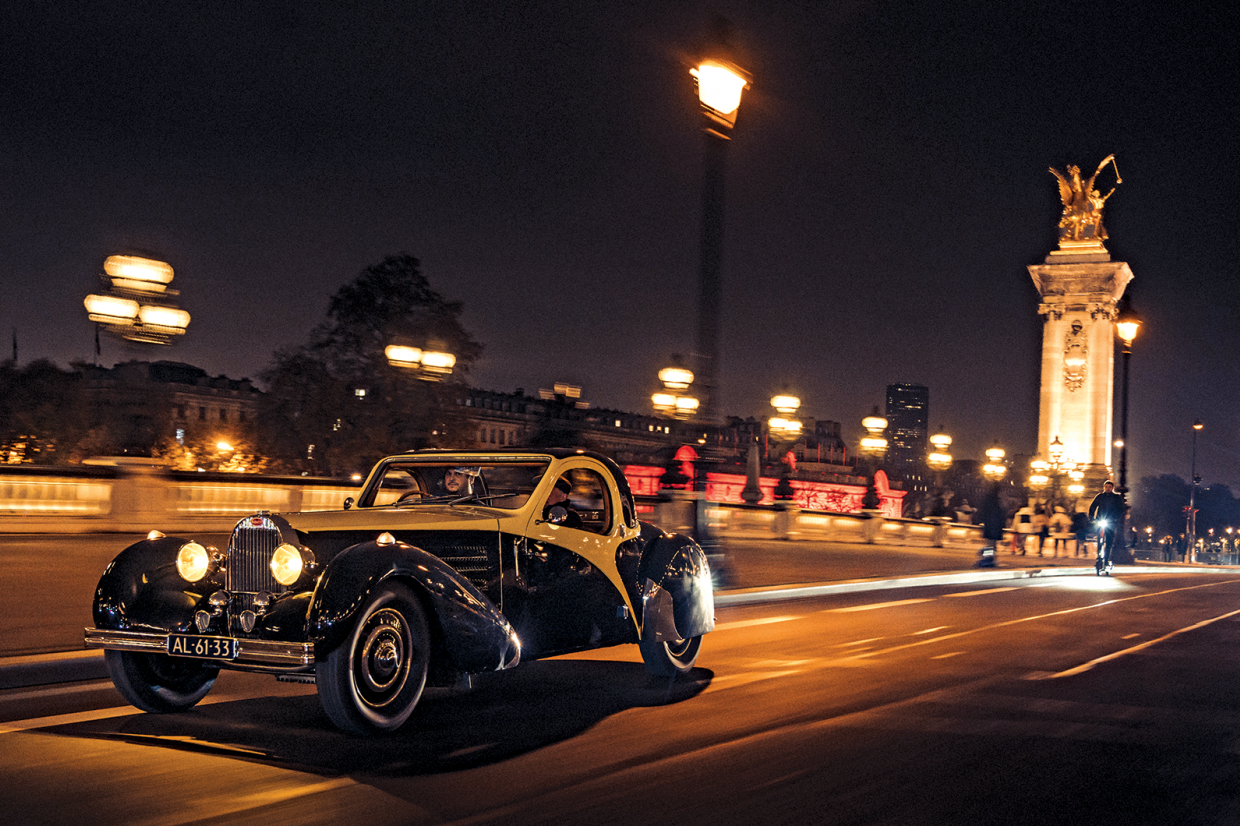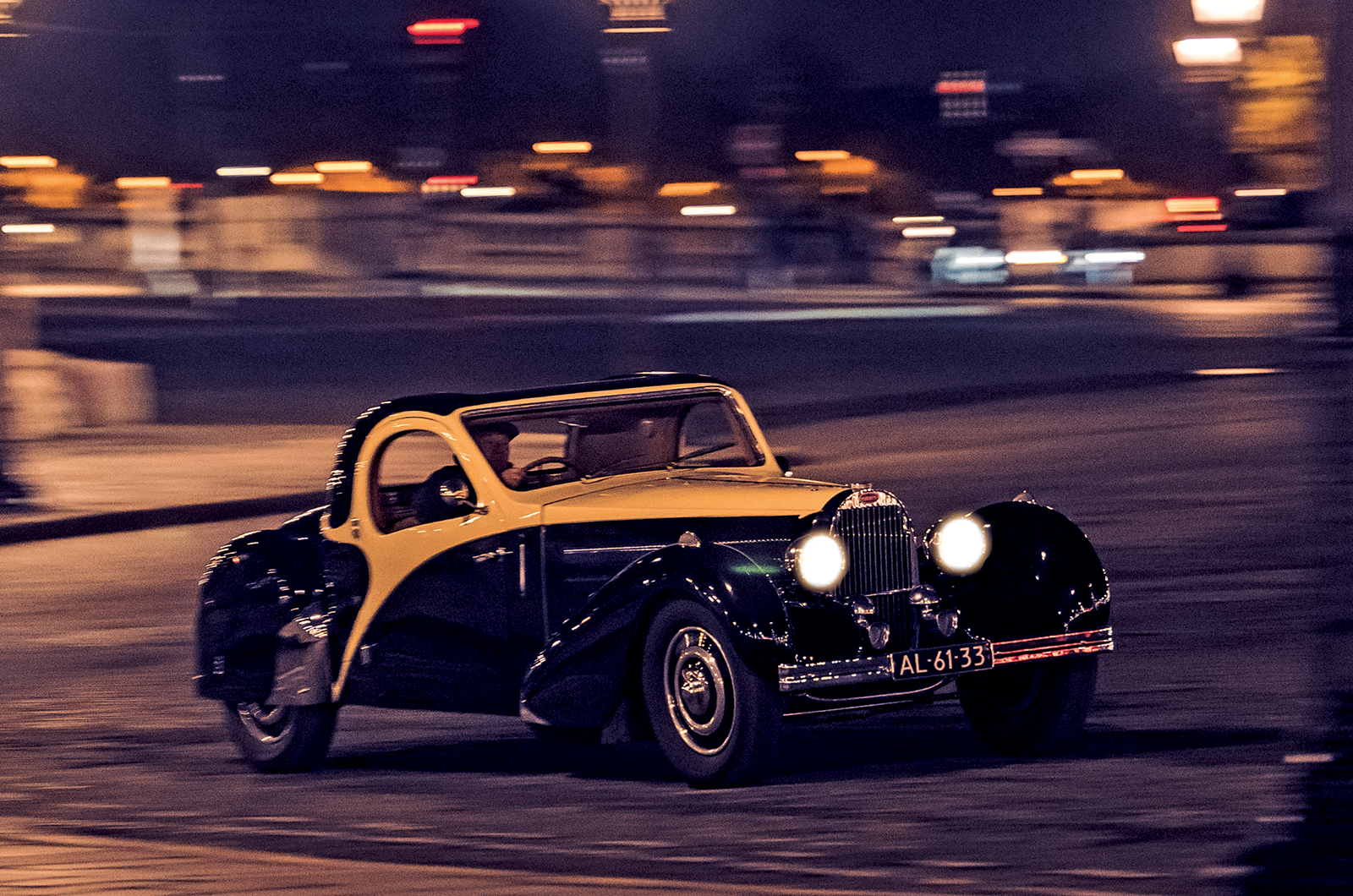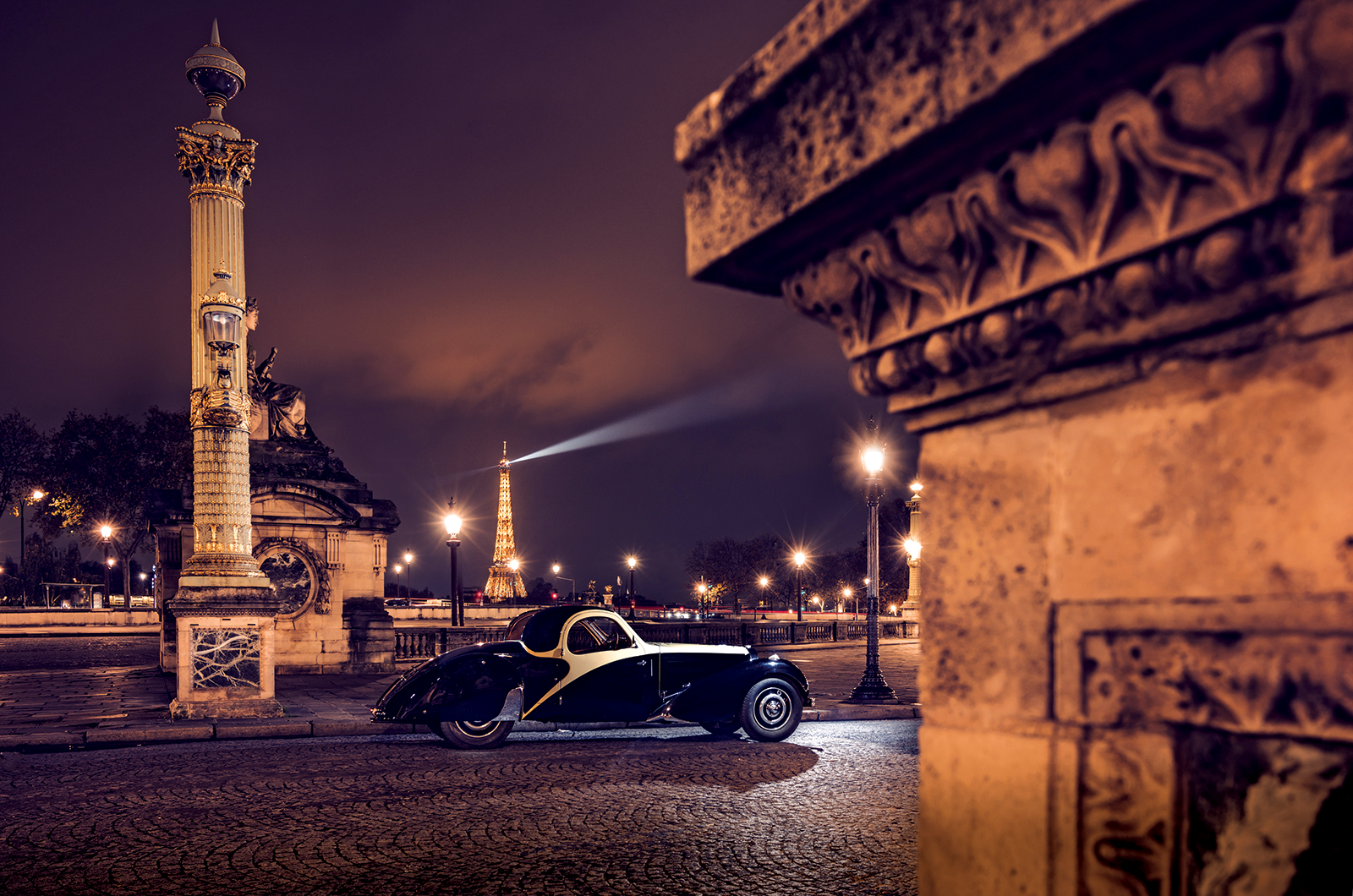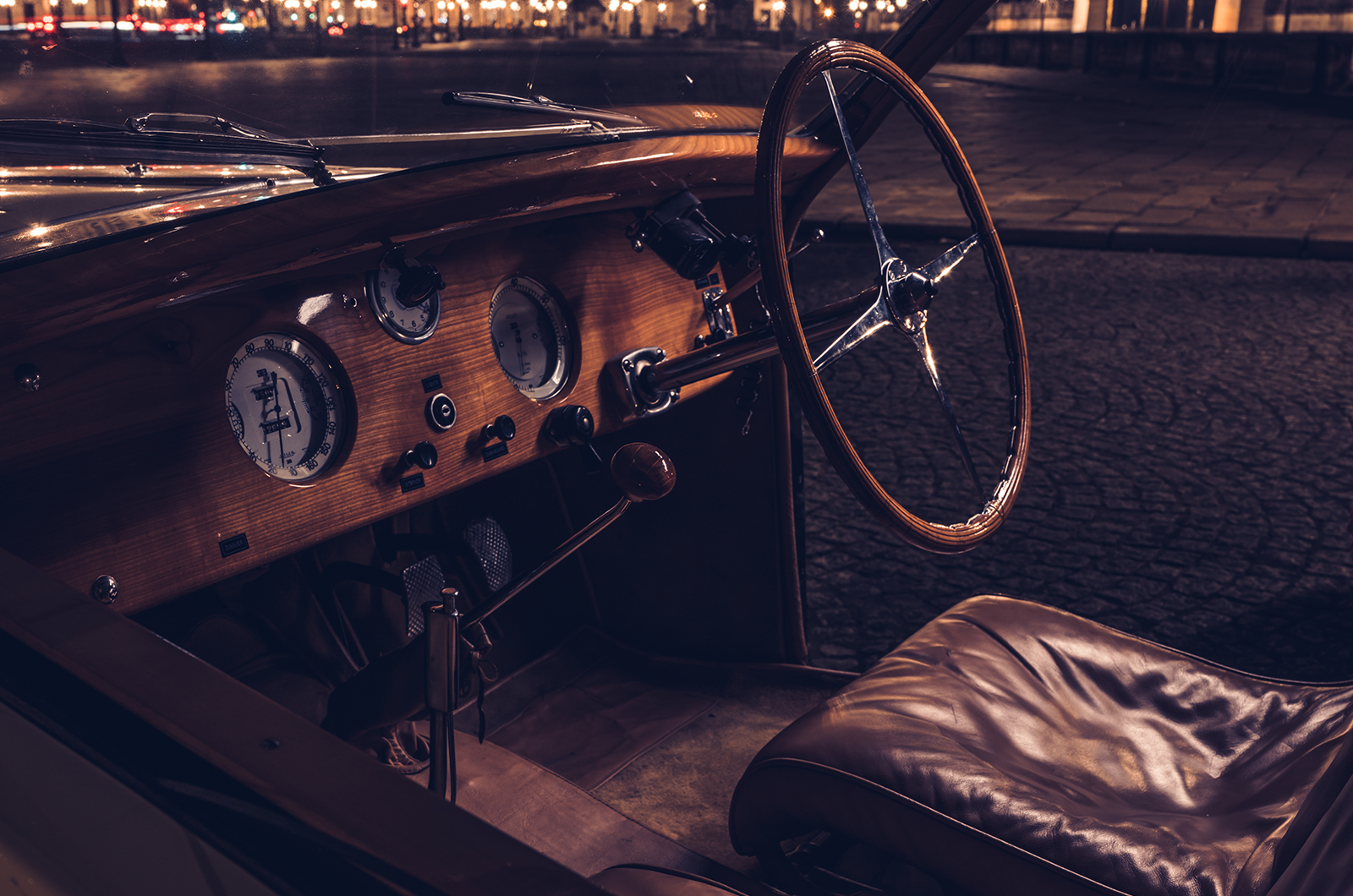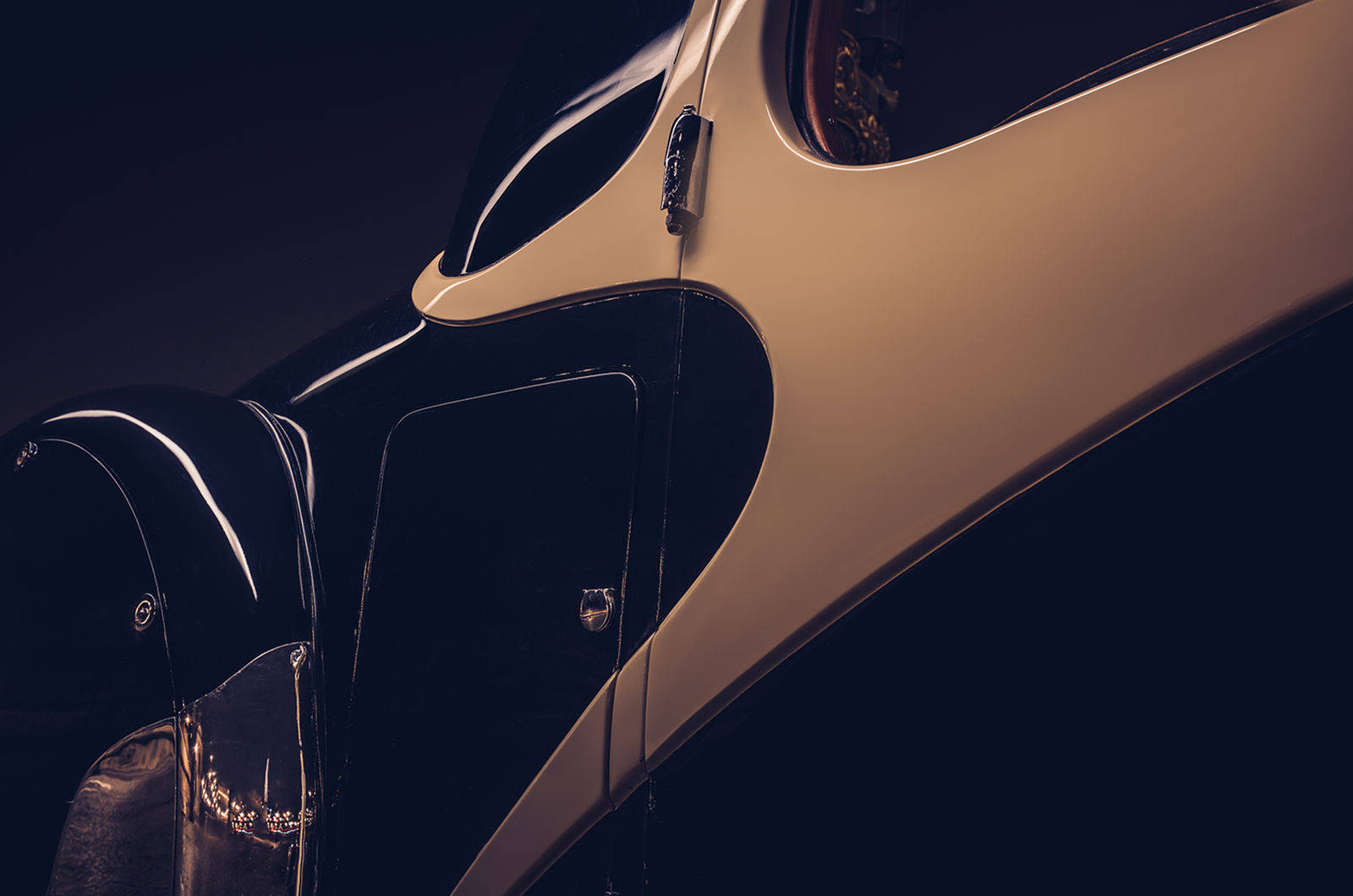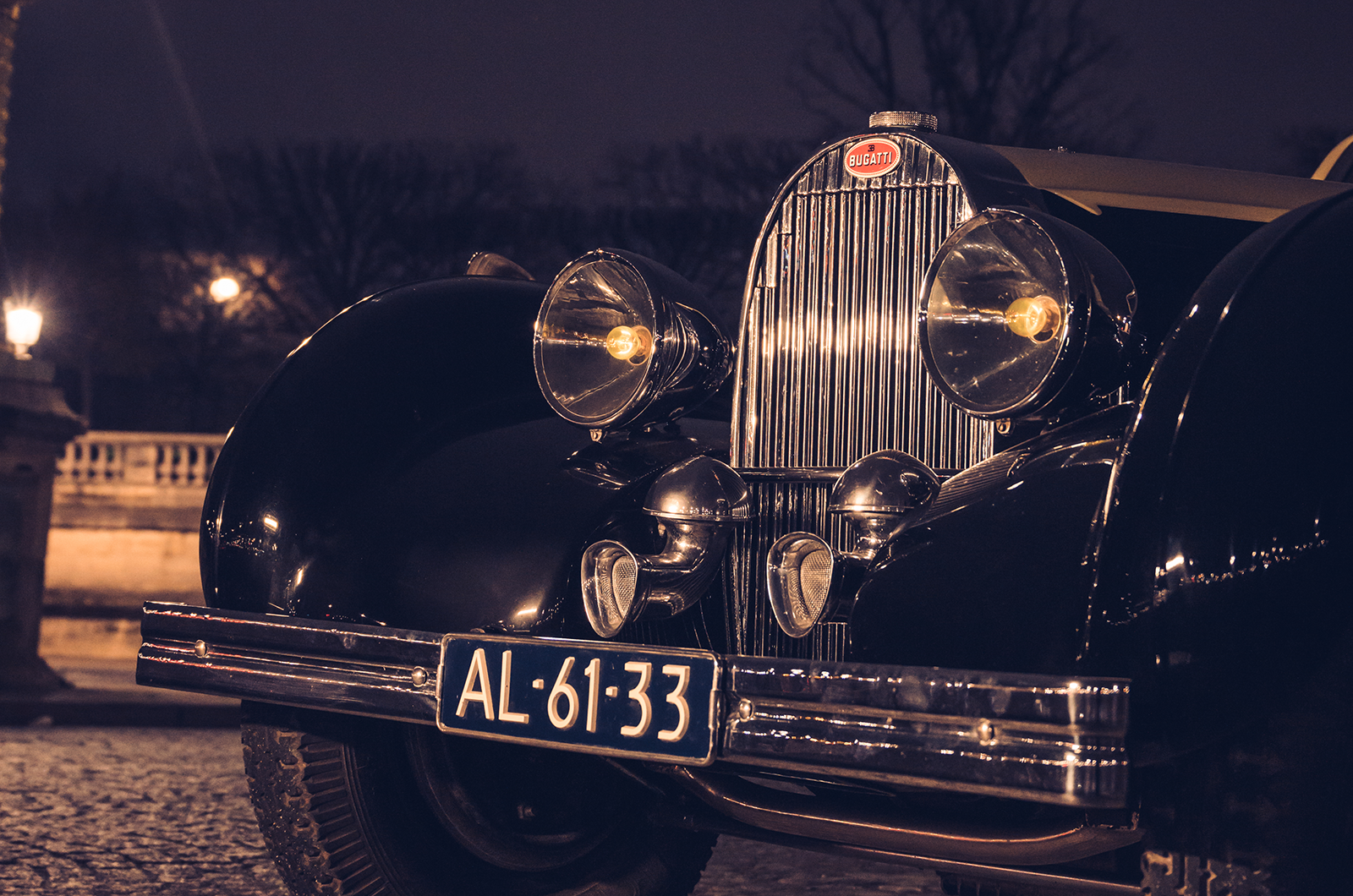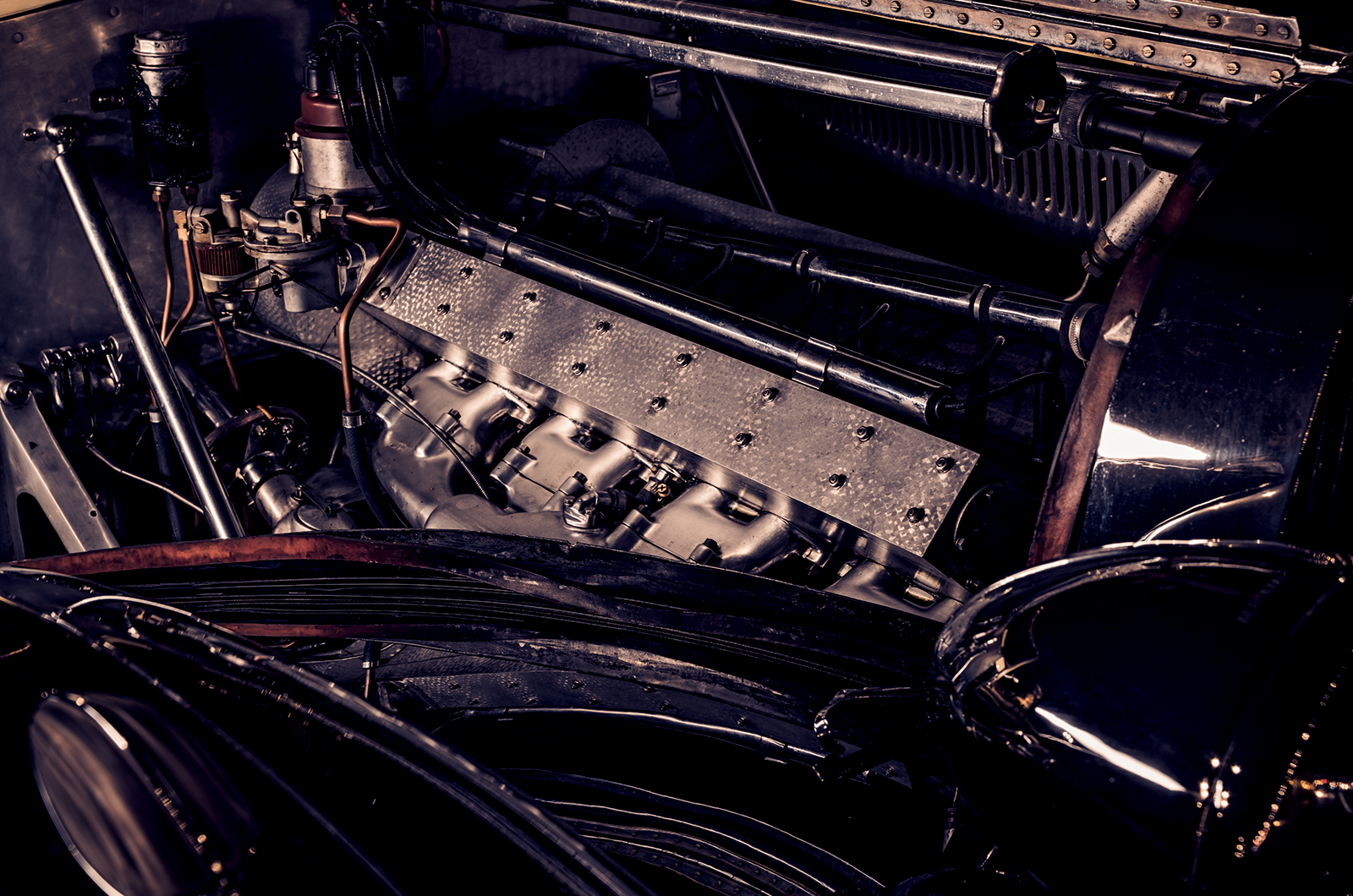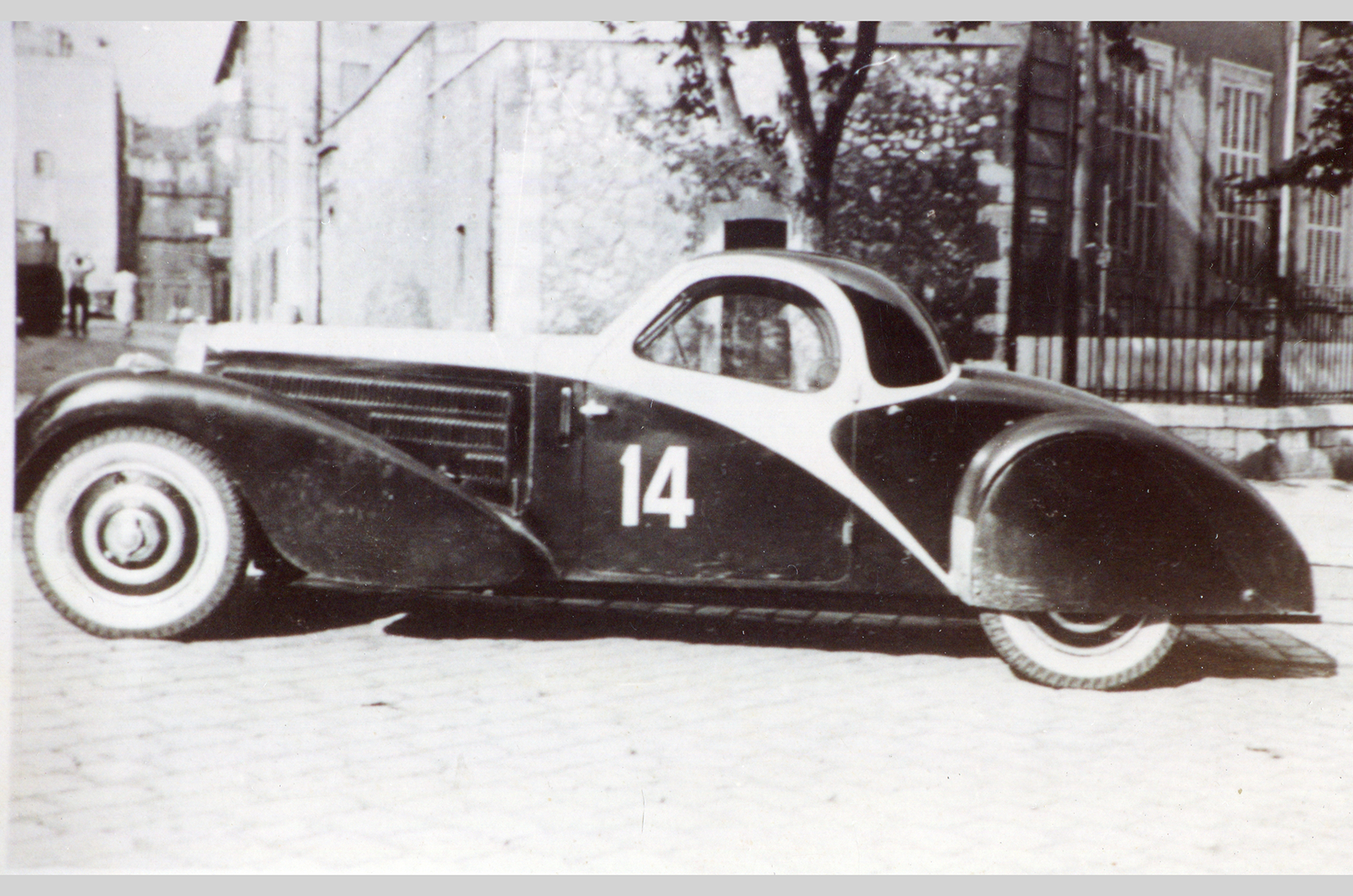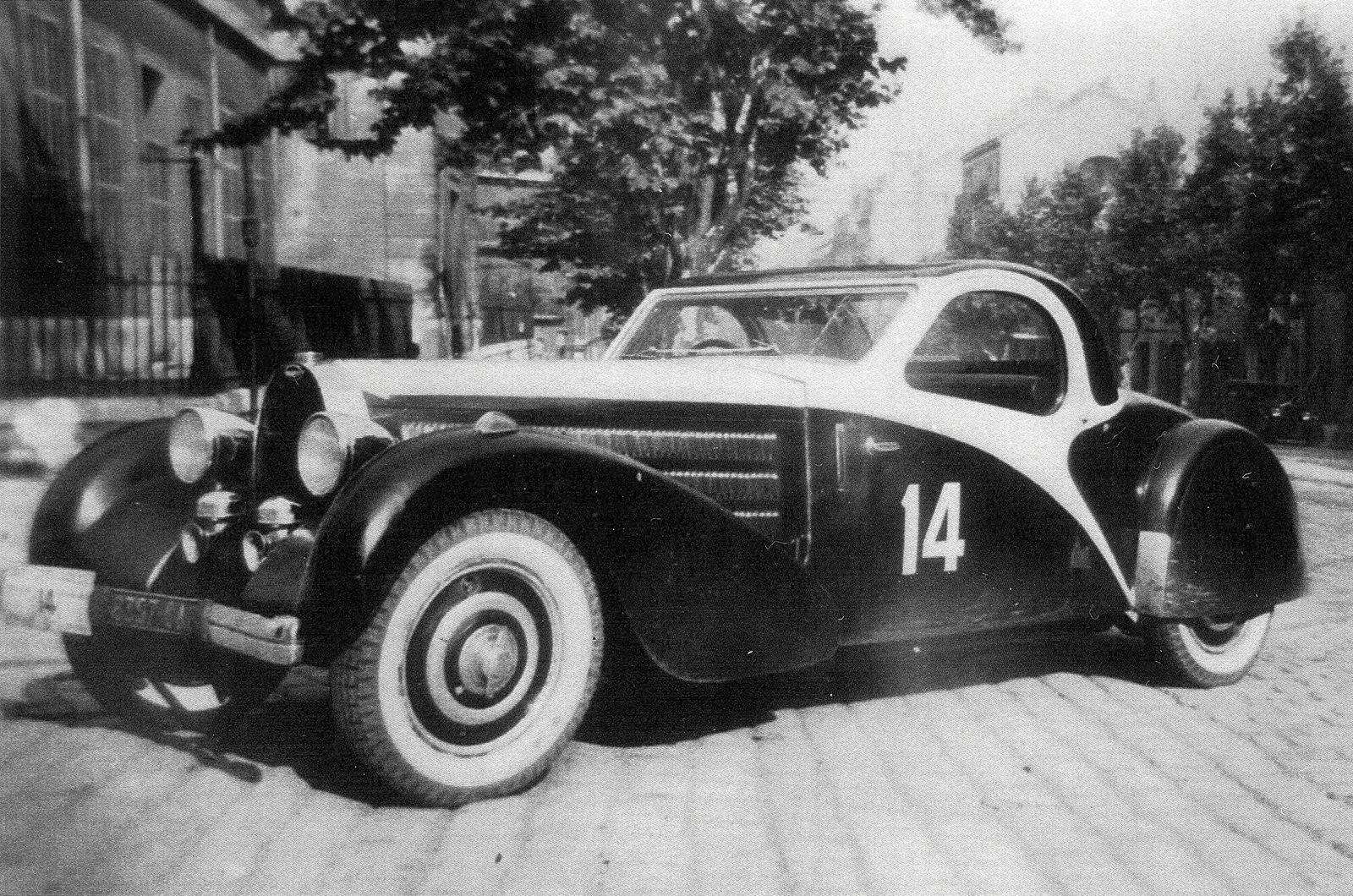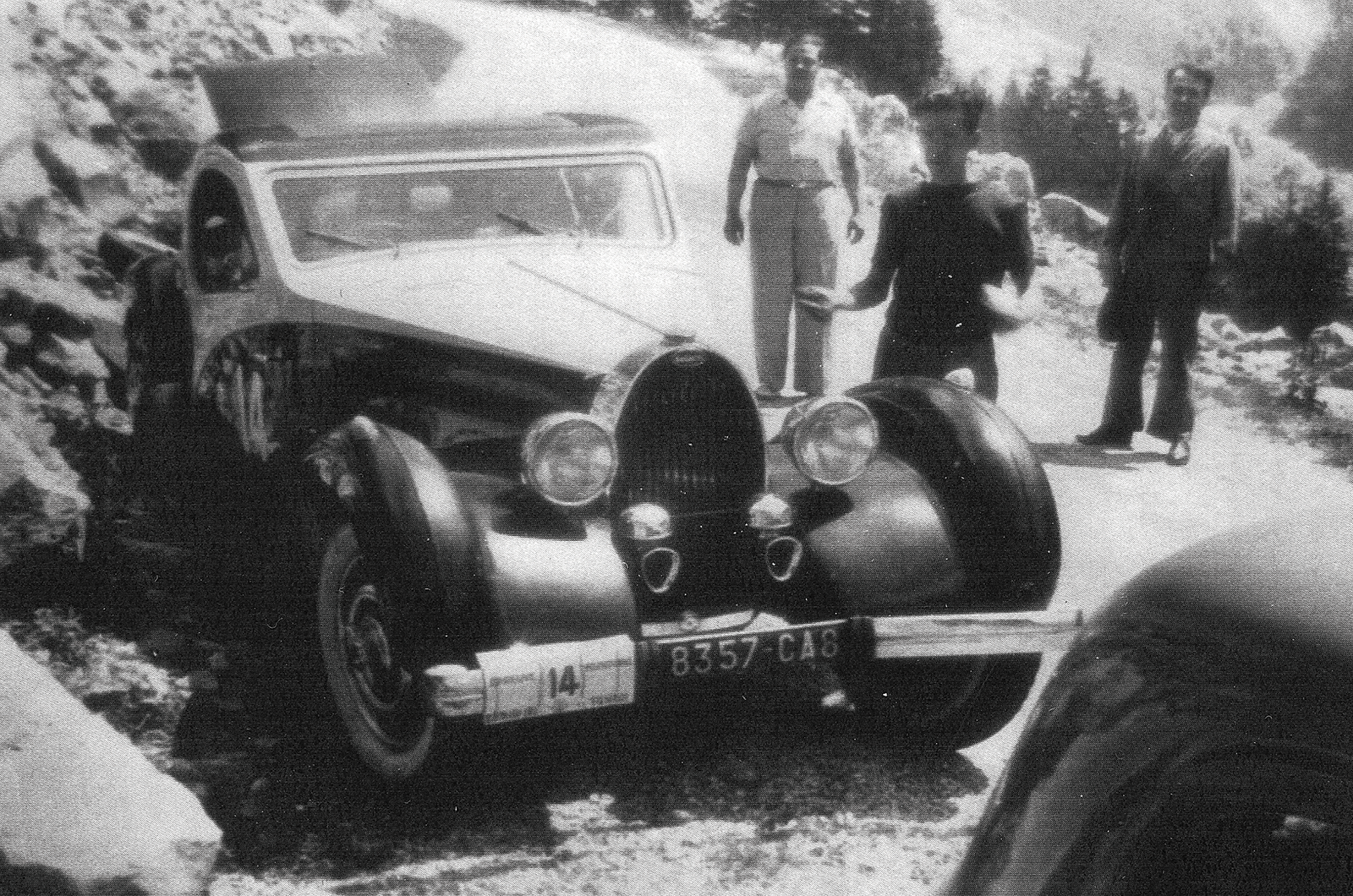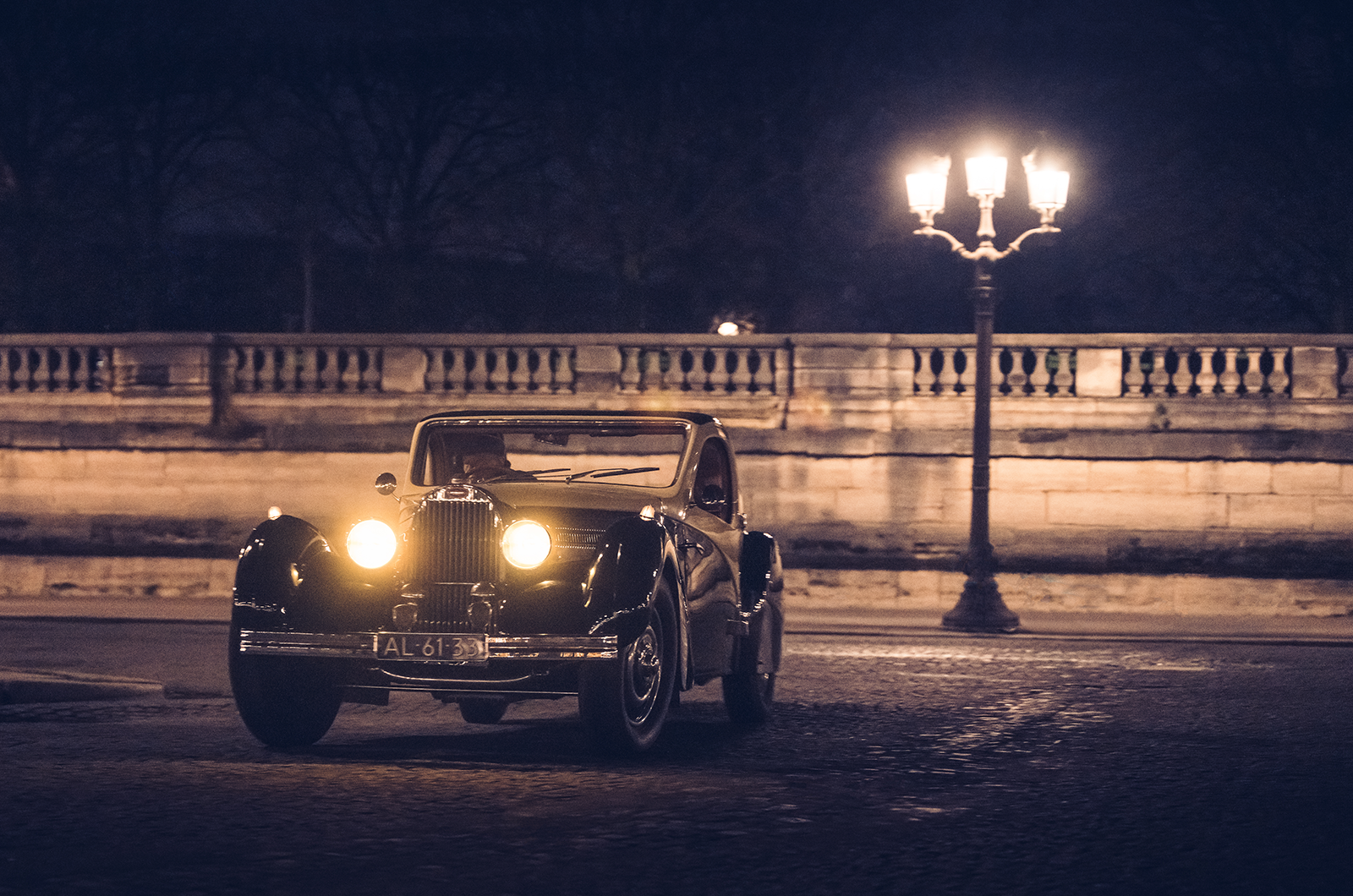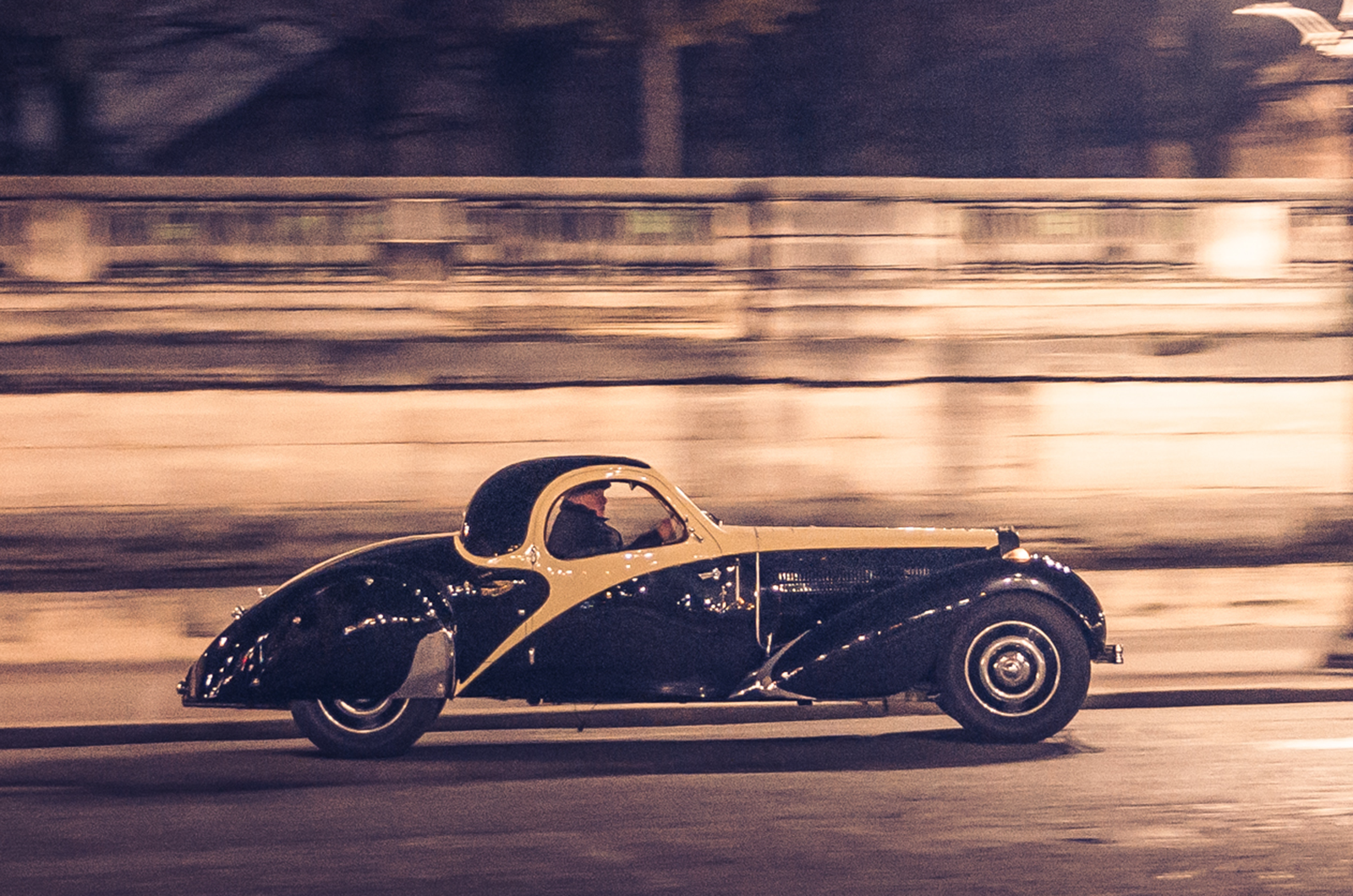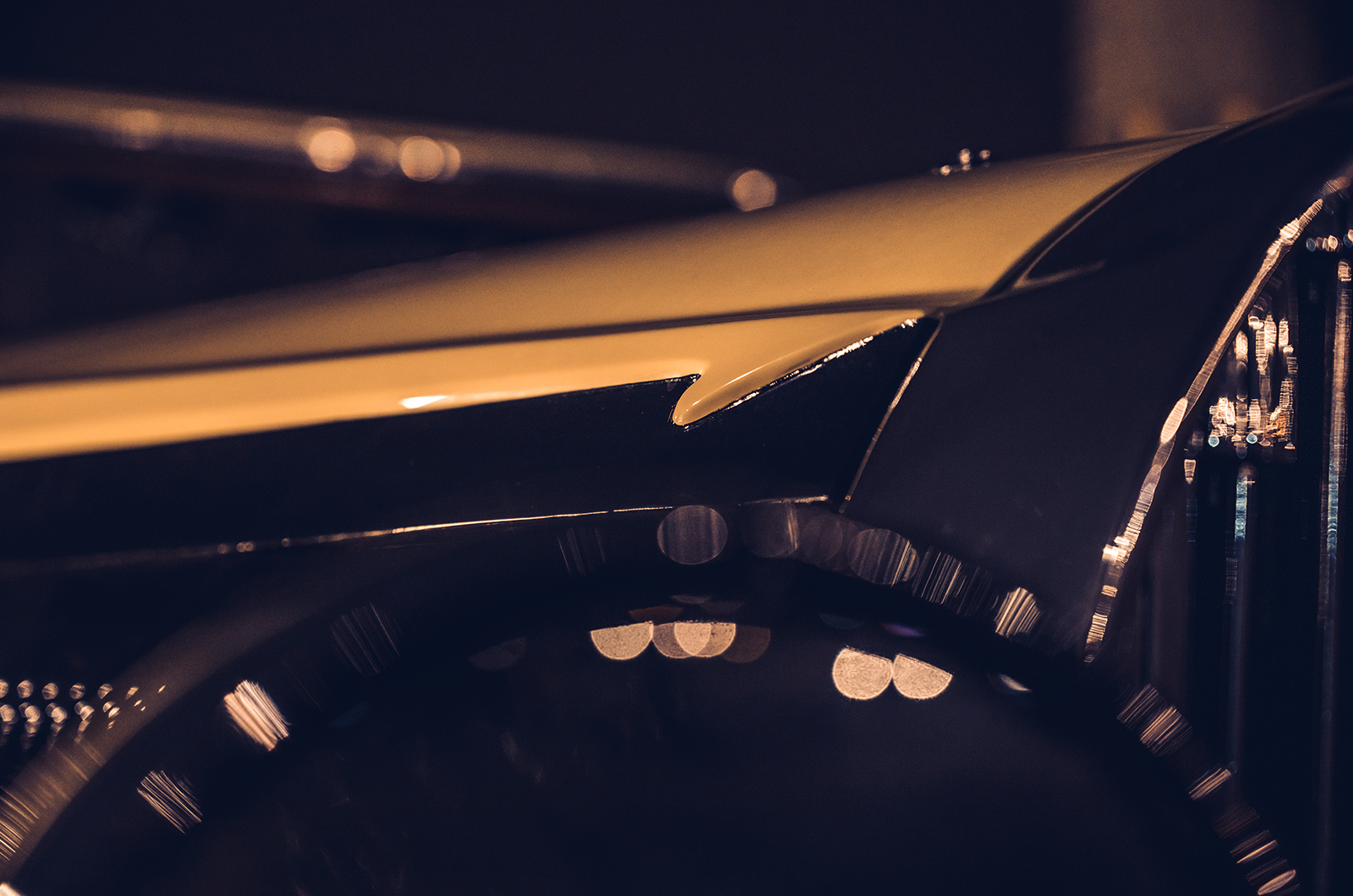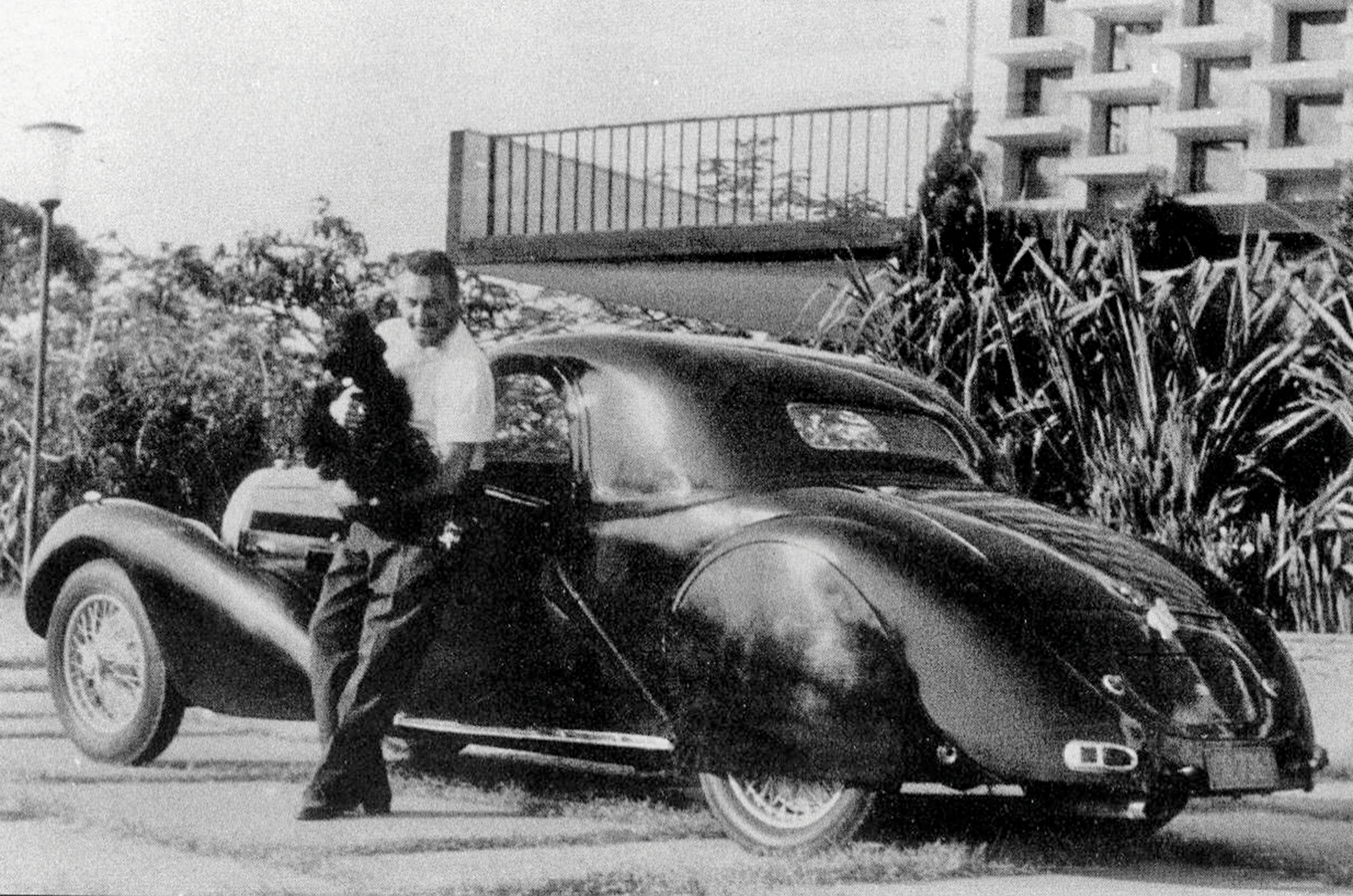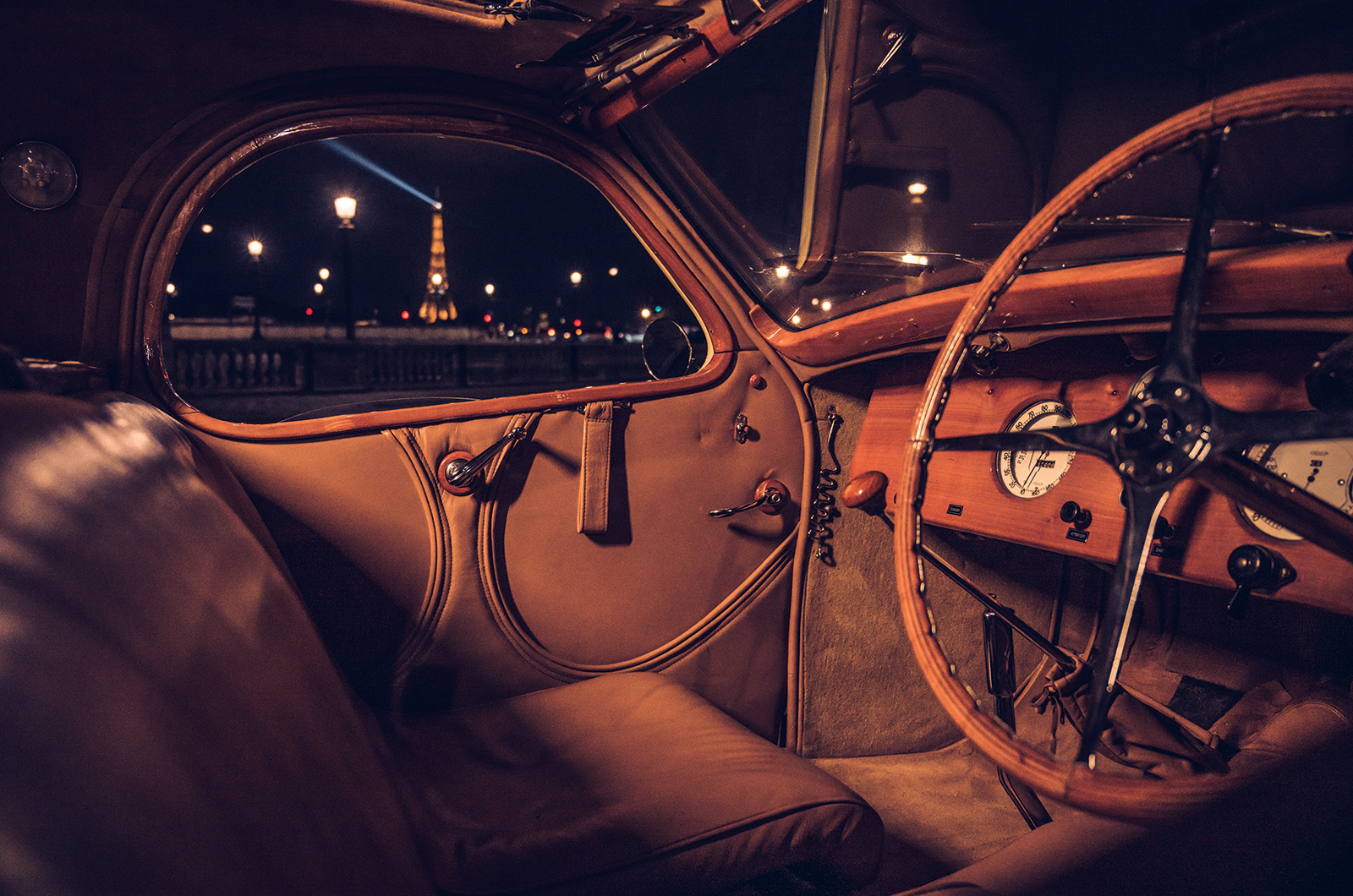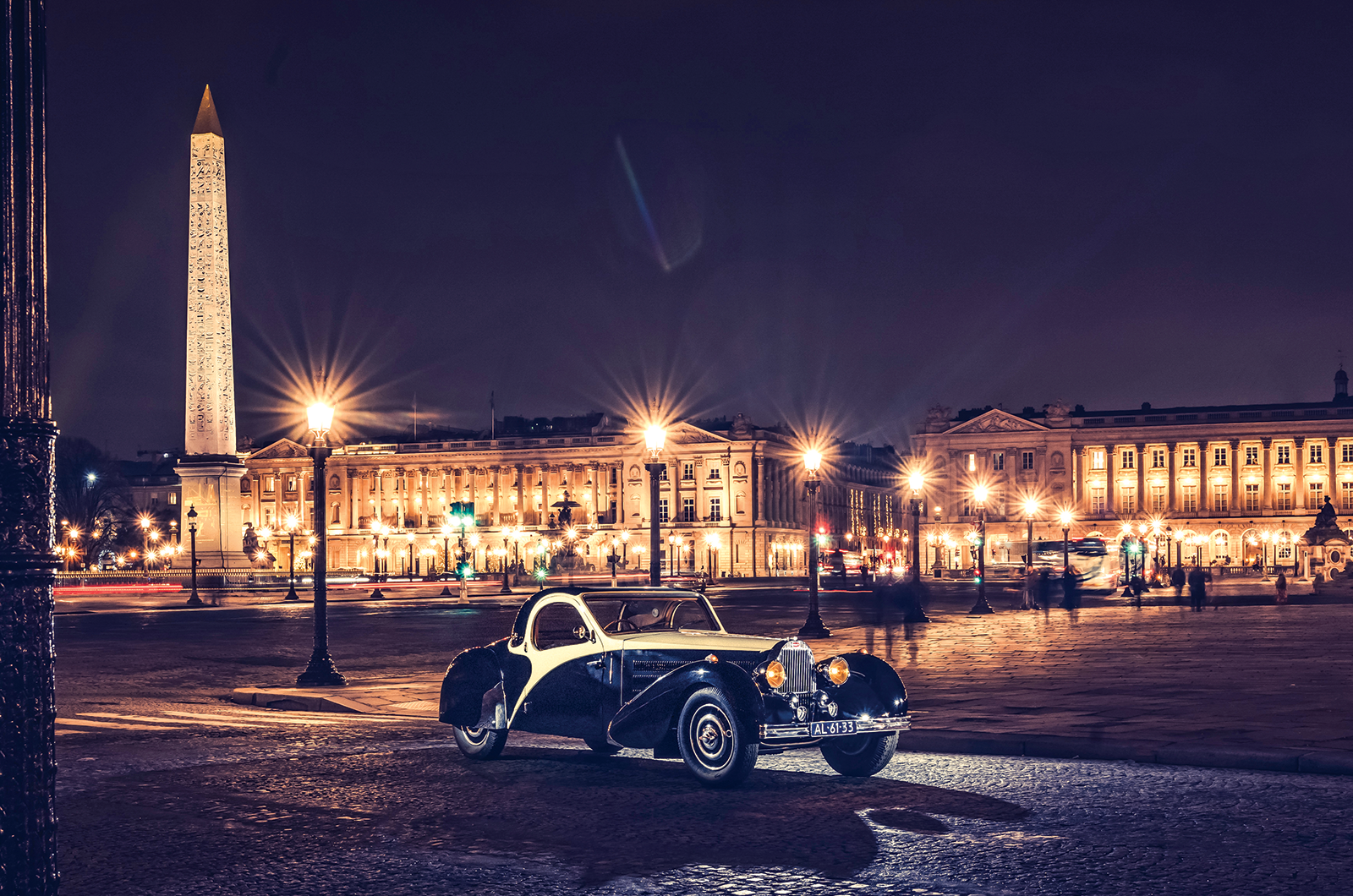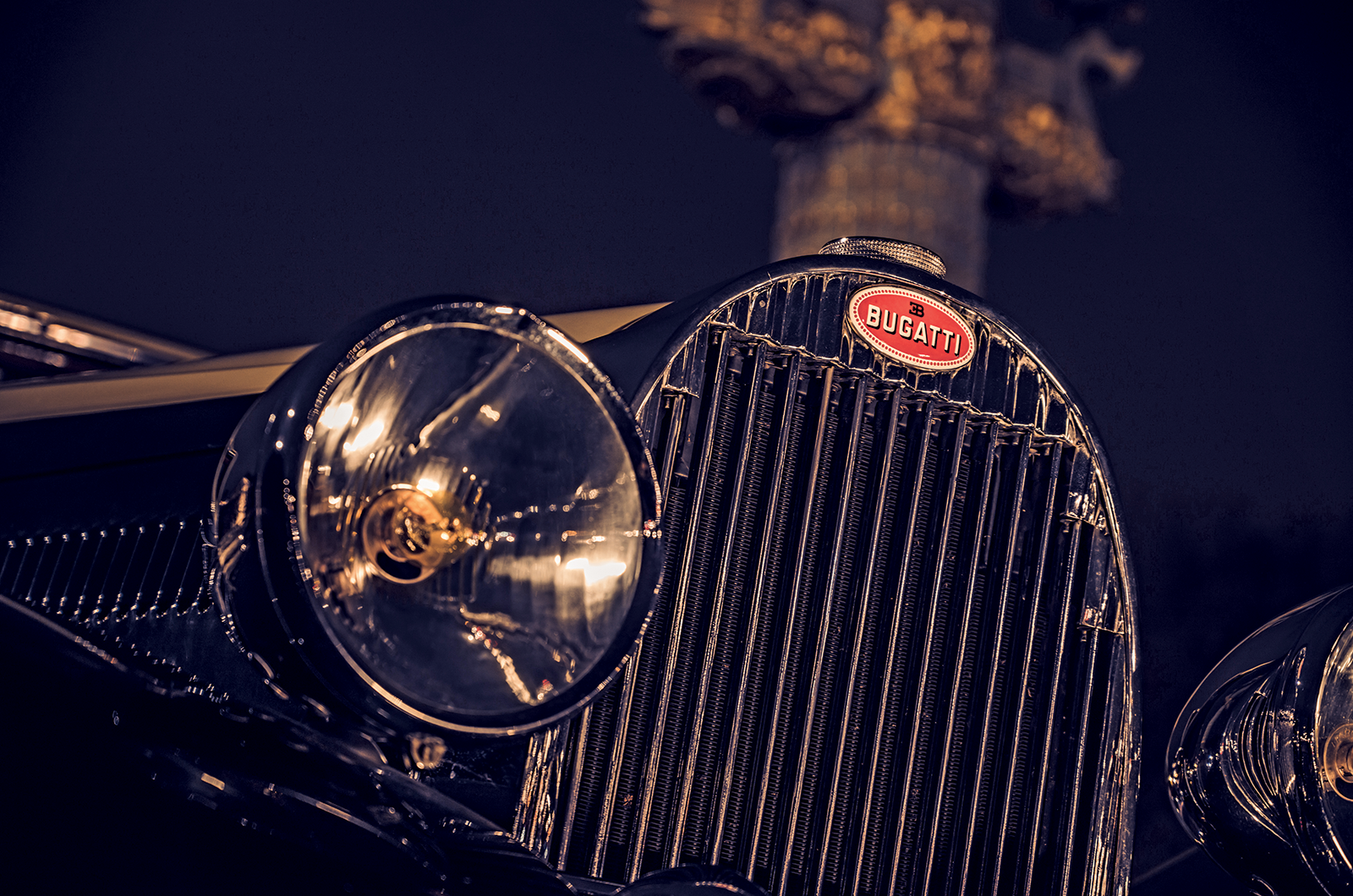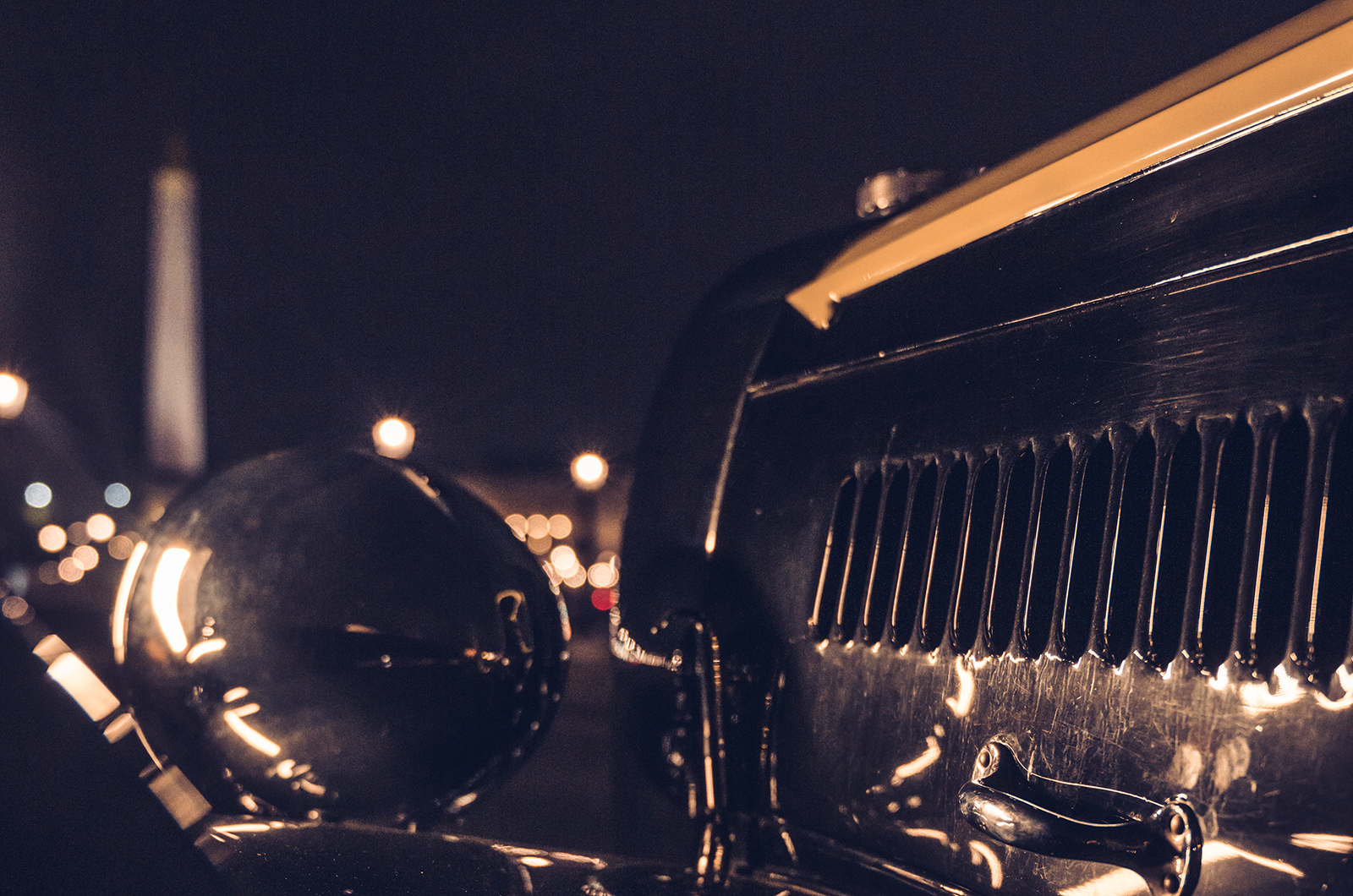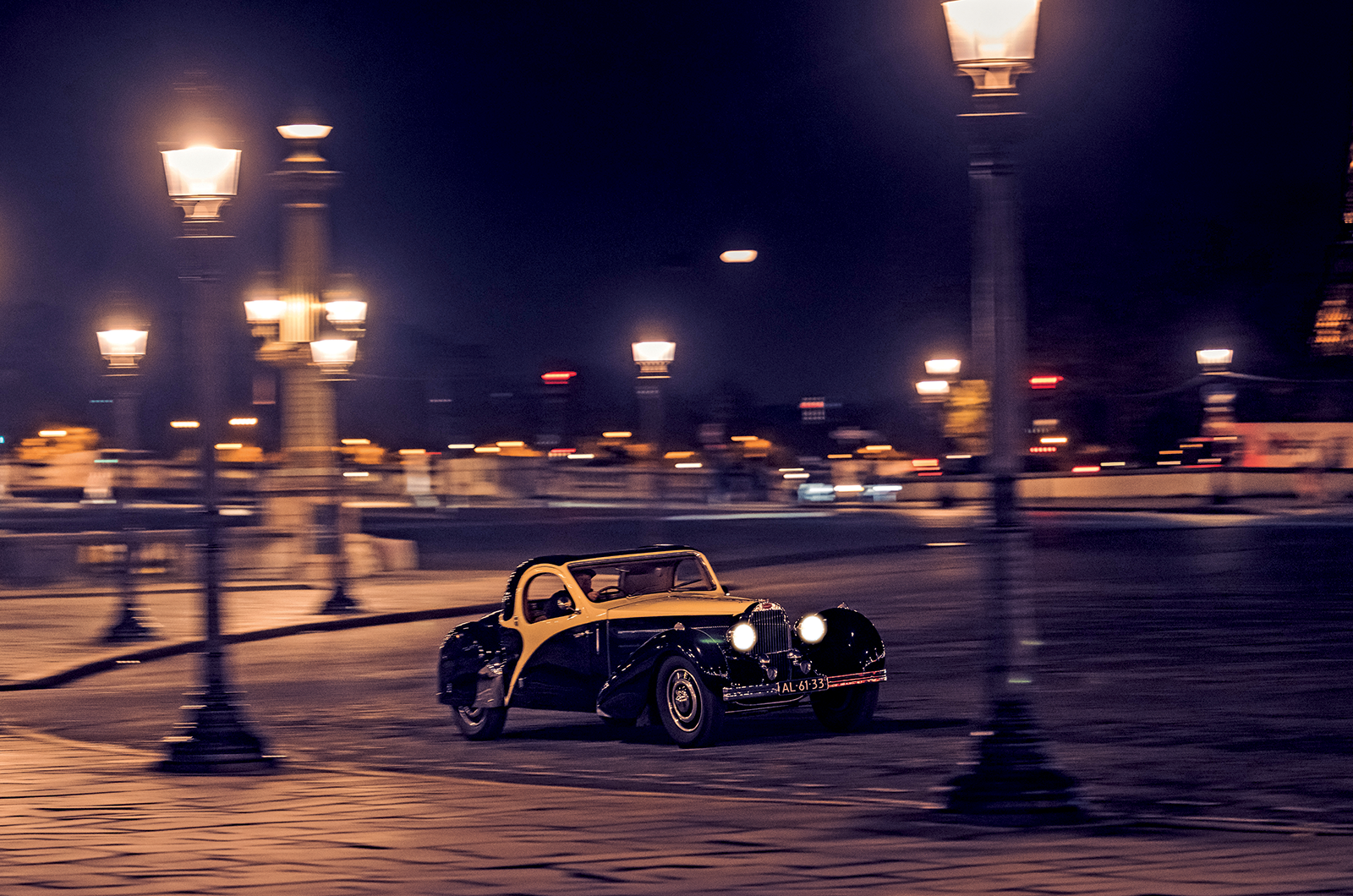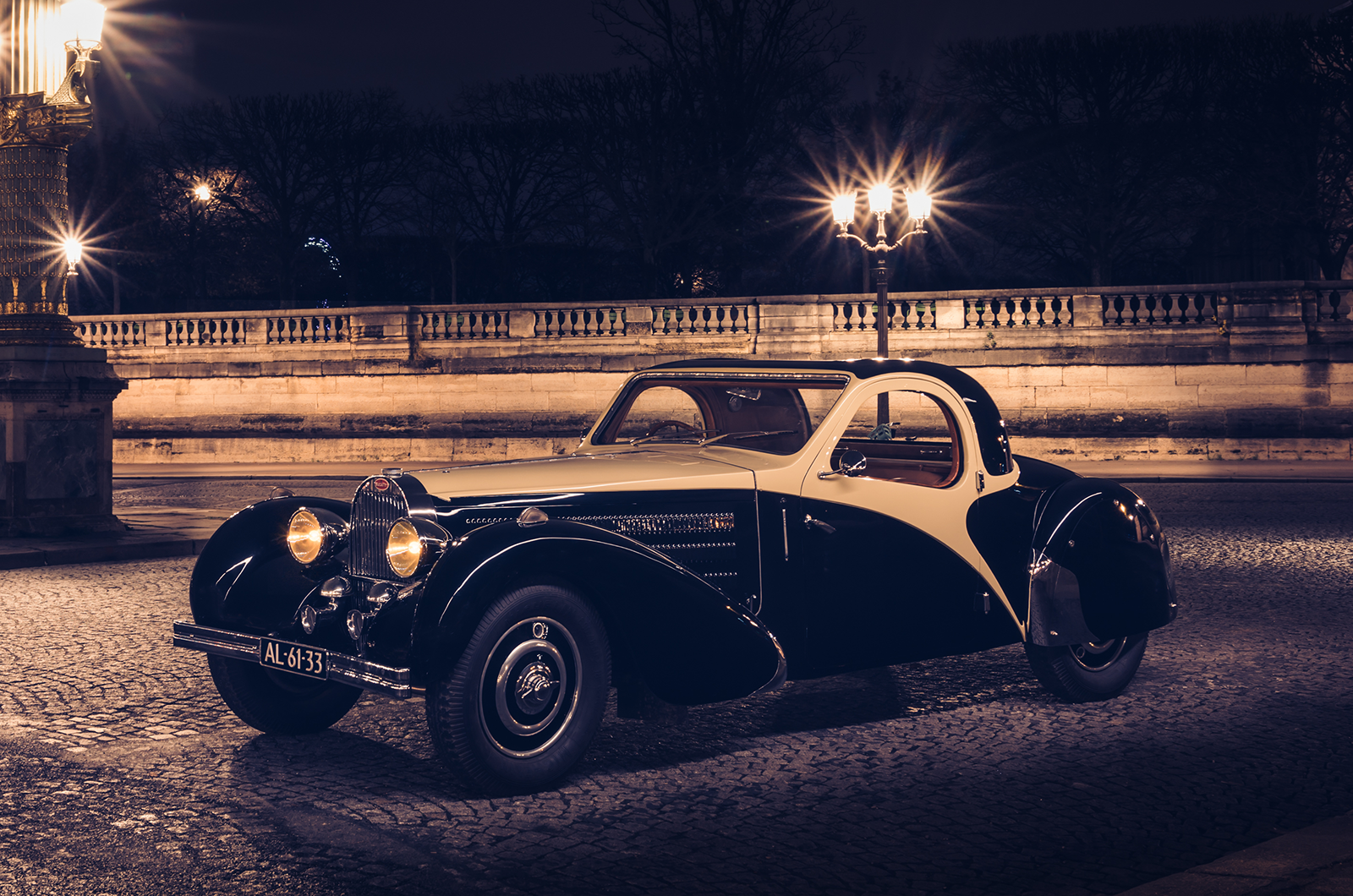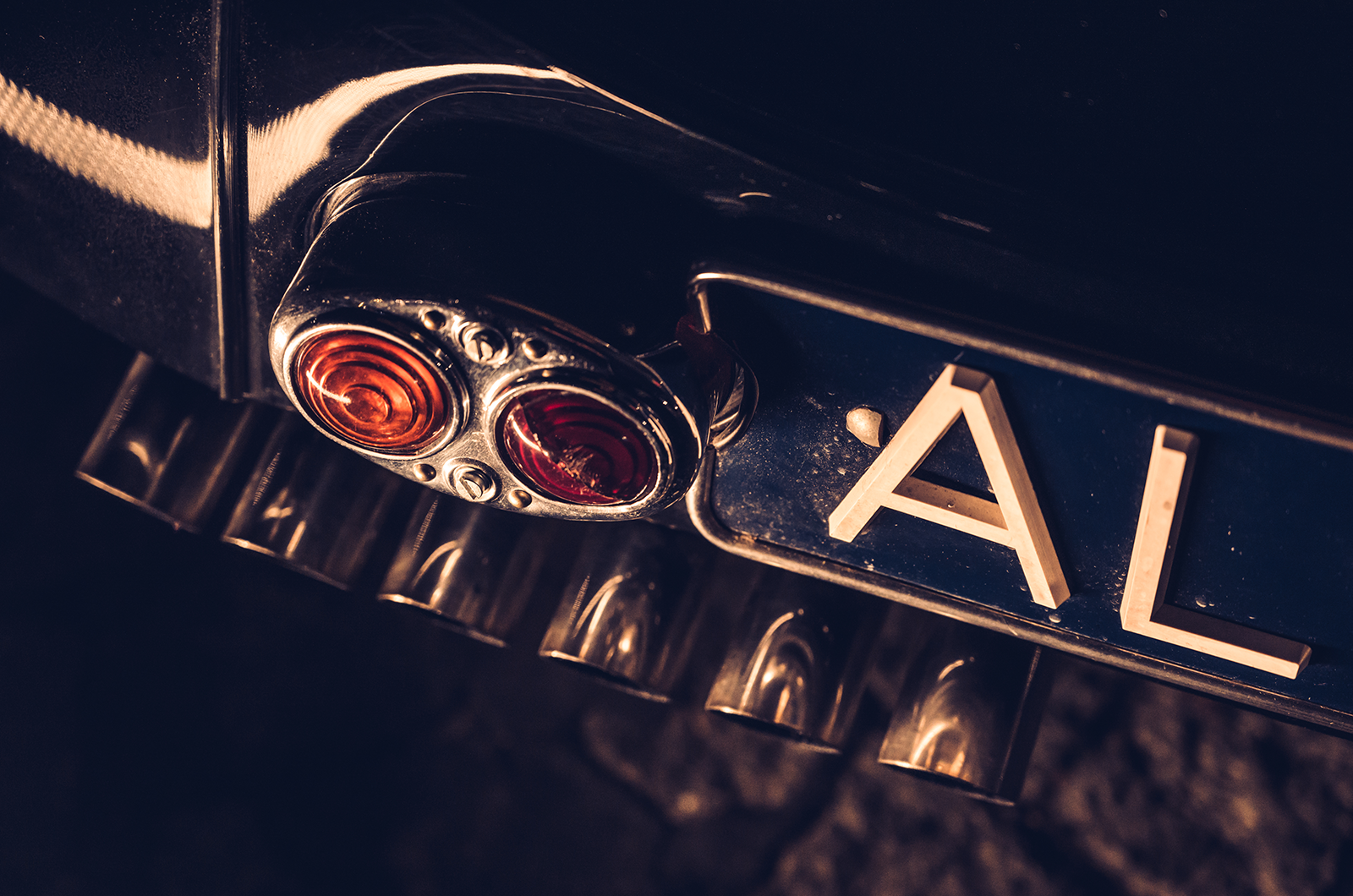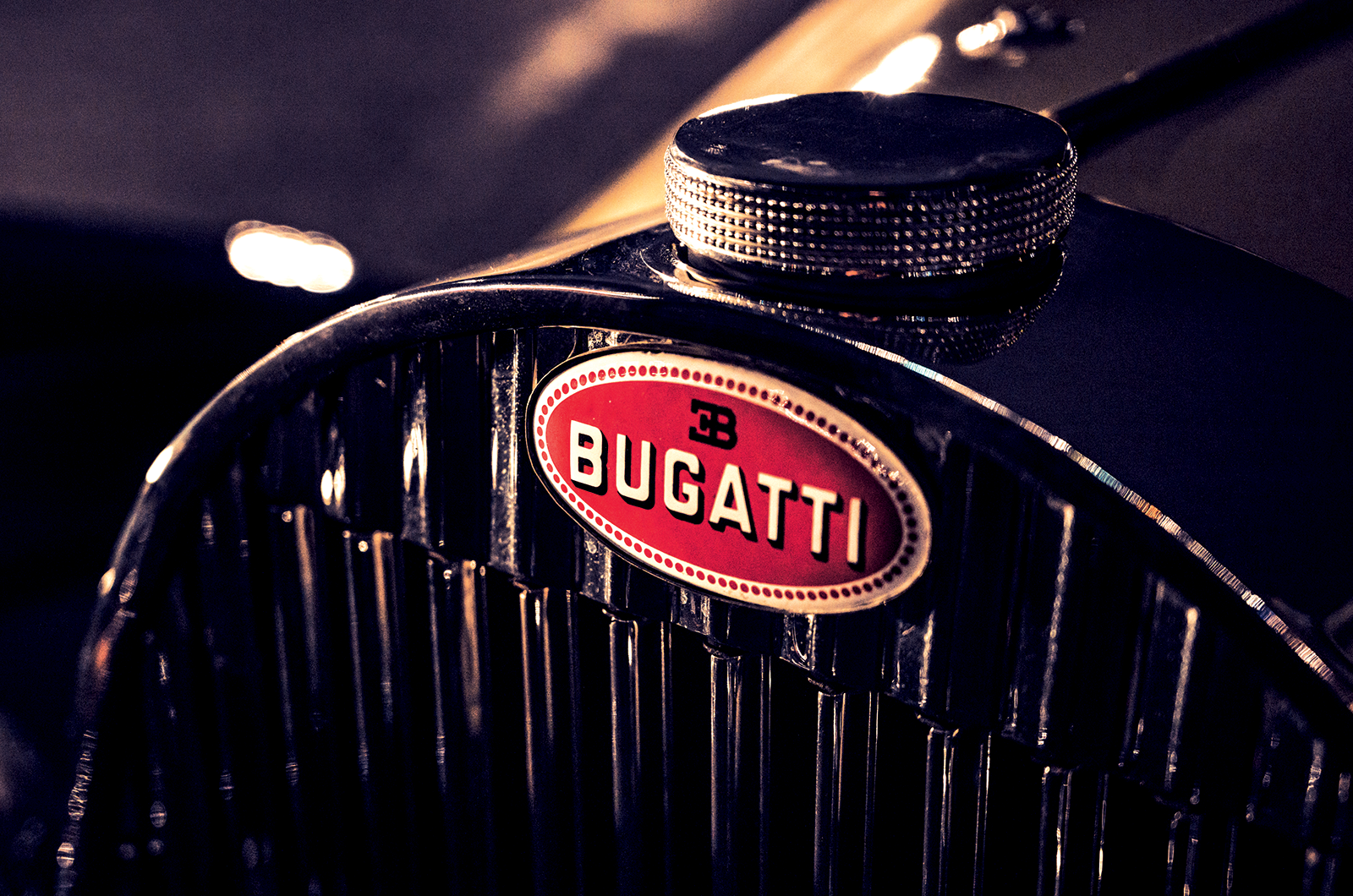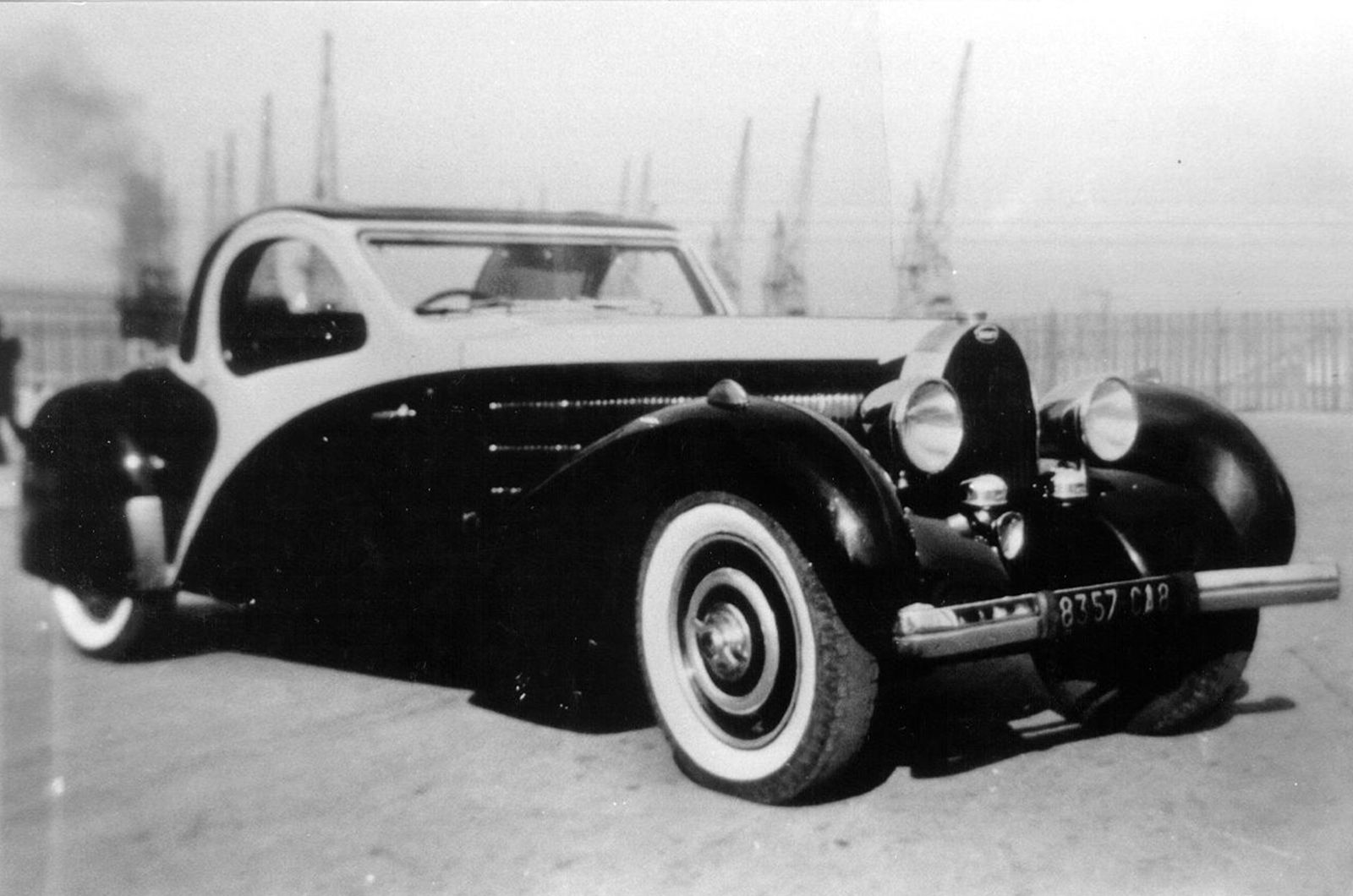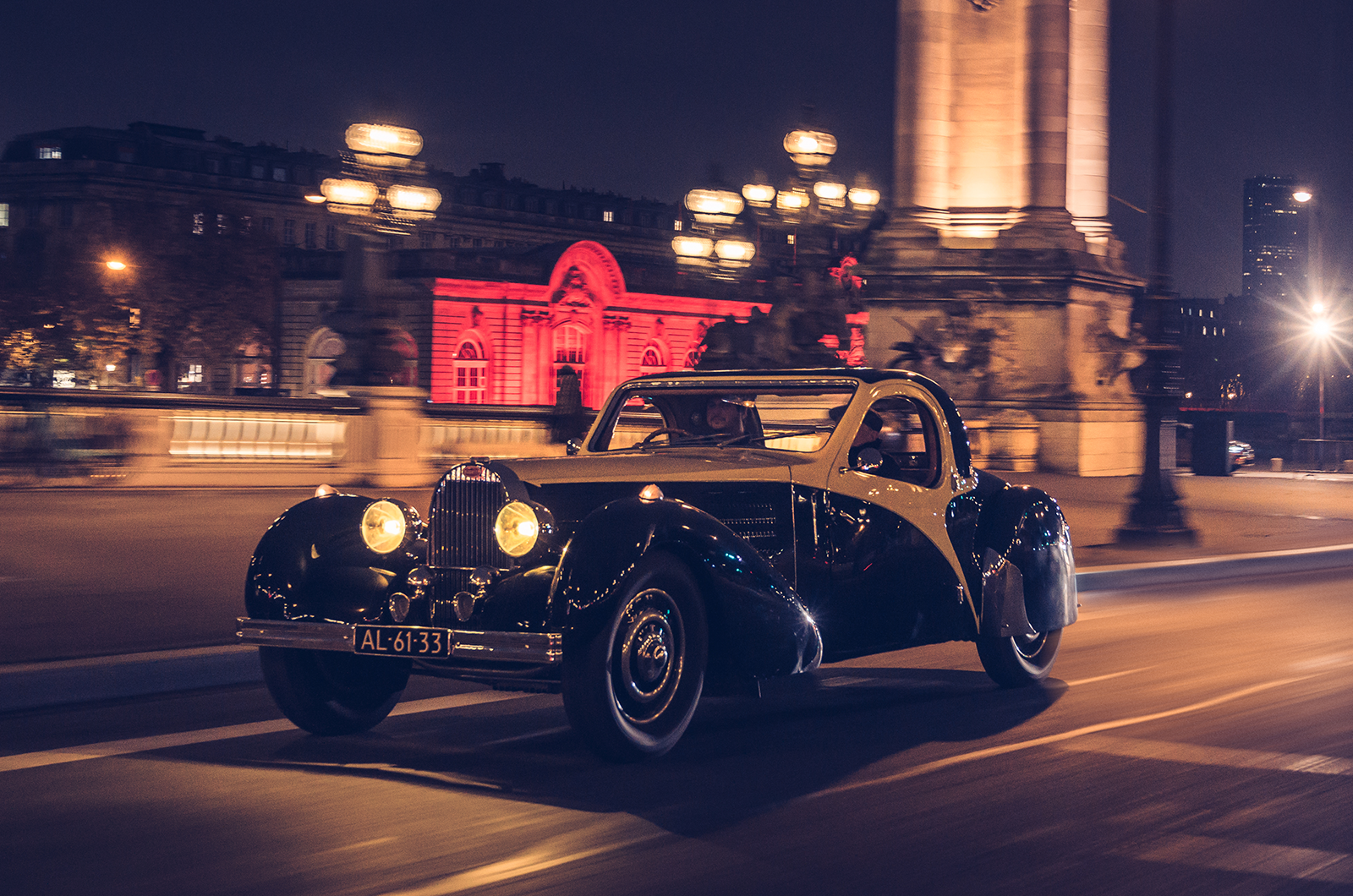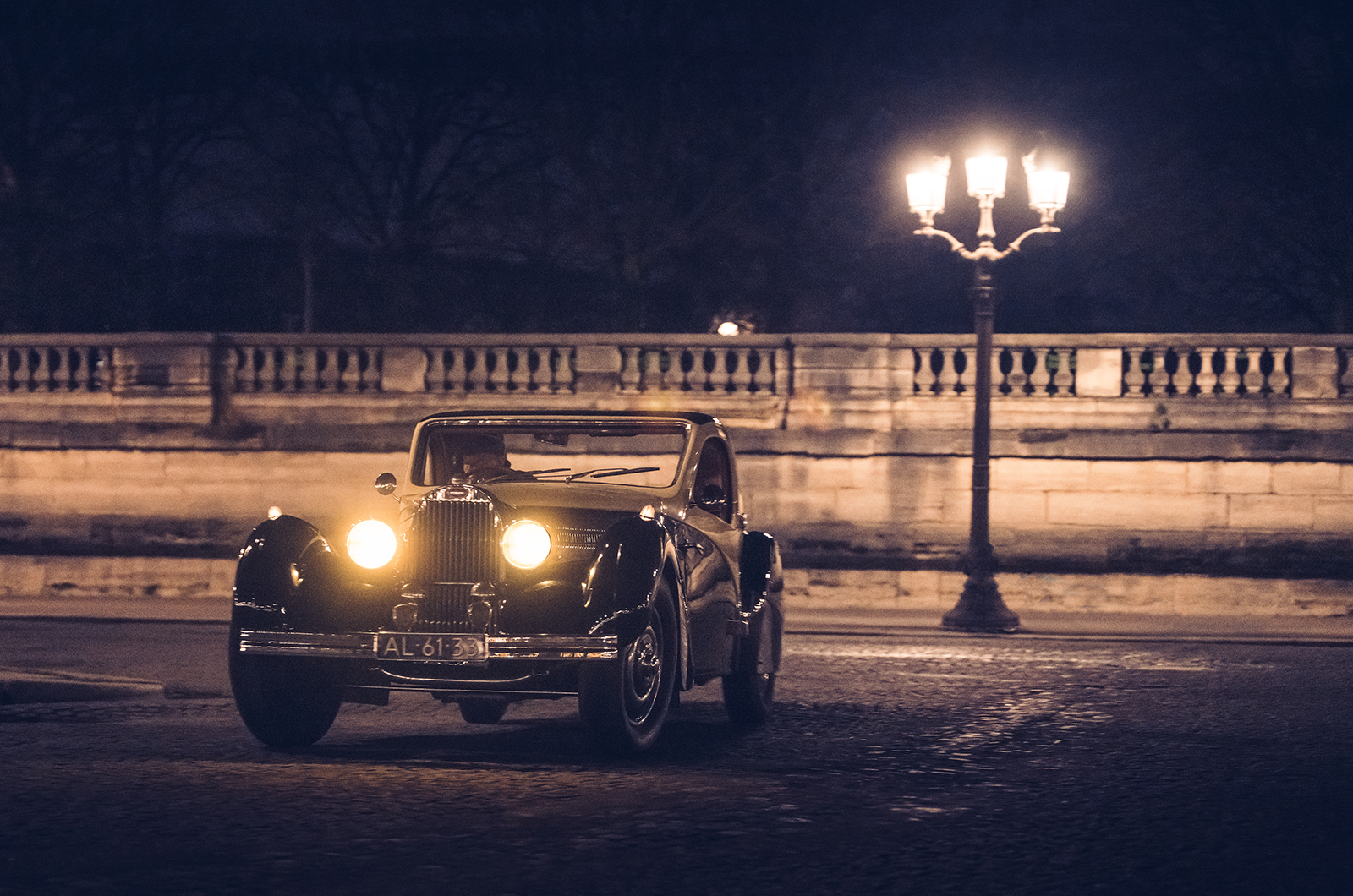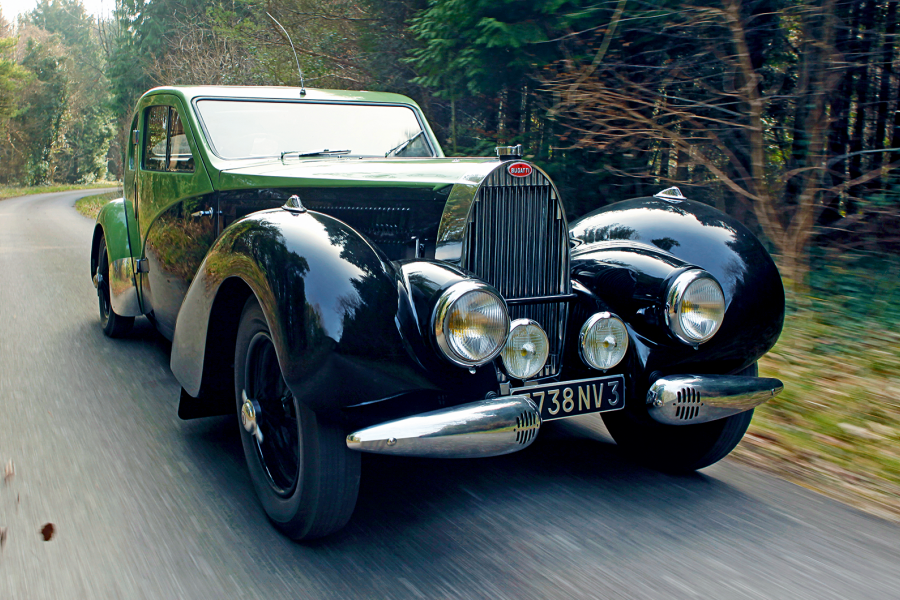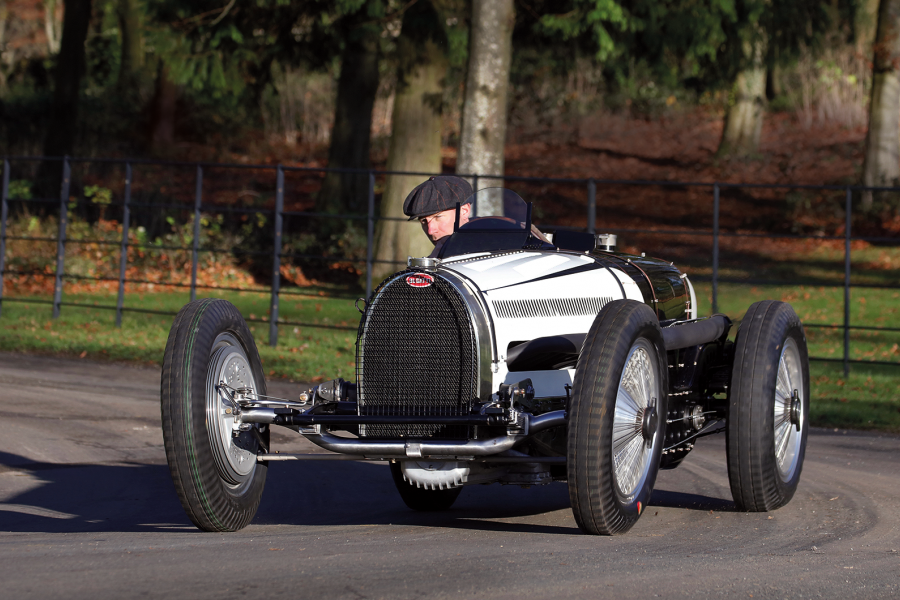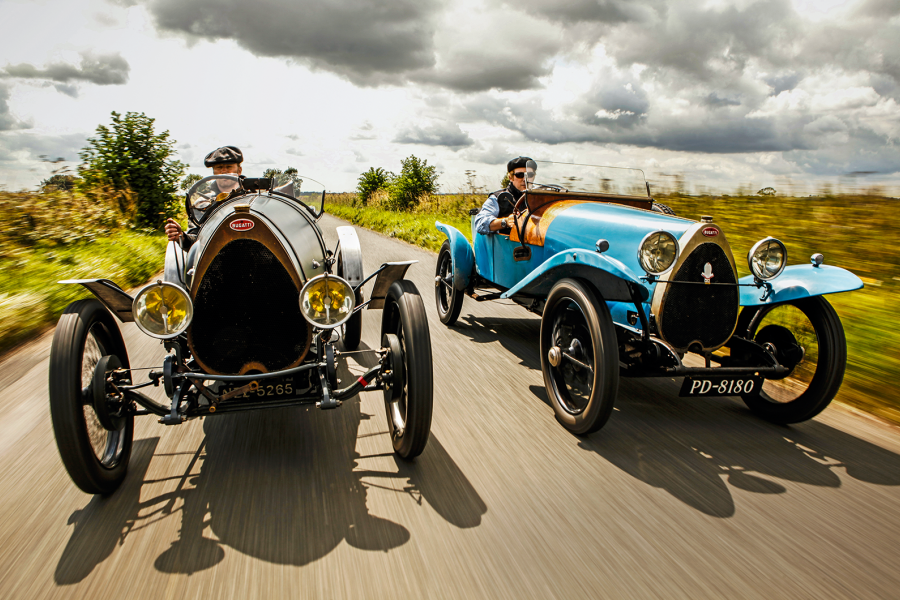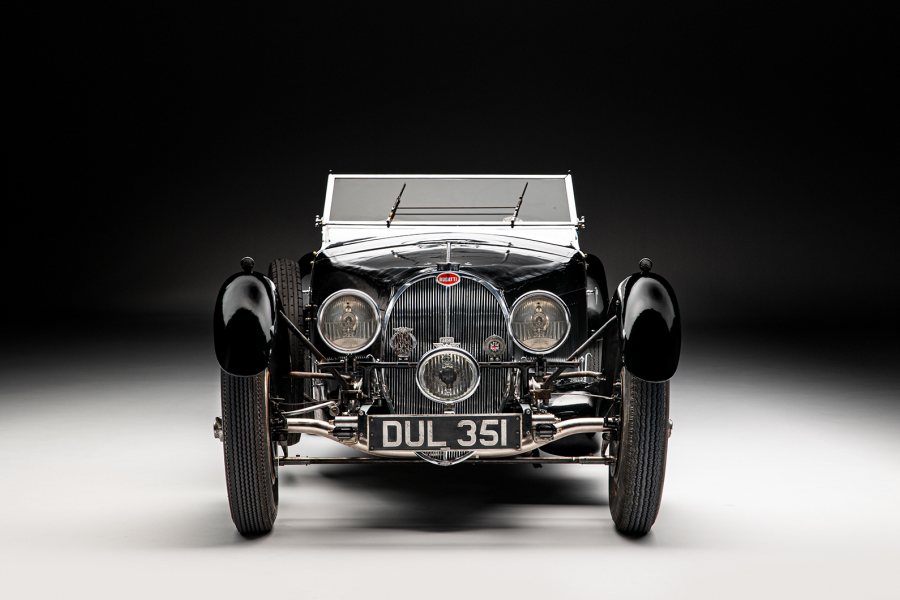The architect and his wife returned penniless to Belgium, where Cloos agreed to take back the Atalante.
He was issued the local number L 4005 and owned the car for a decade, until another colourful character entered the T57’s life.
Gaston Greven owned the Royal Bugatti nightclub, which was regularly patronised by Cloos.
Greven had just taken delivery of a new Jaguar XJ12, for which there was a year-long waiting list, and Cloos was impressed enough to offer a swap with the Atalante plus a cash adjustment in Greven’s favour.
Art Deco-style map pockets in the doors mirror the classic Bugatti’s curves
After repainting the car yellow and dark blue, Greven took part in the 1974 Rallye Monte-Carlo des Voitures Anciennes, keeping the registration L 4005.
On another event Greven met Lucien Mette, who asked what figure would part him from the Type 57.
Greven came up with a number that should have put him off; it didn’t, and he felt compelled to sell the Atalante when Mette turned up at his hotel the following day with a suitcase full of cash and two large associates.
Atalantes are distinguishable by their flat, one-piece windscreens and full-sized doors with teardrop windows plus a long, sweeping tail
Mette was actually sourcing cars for collector Maurice Teisserenc, who became the car’s new keeper in September 1974.
By that stage the Atalante needed a major mechanical overhaul, including repairs to a bent front axle.
Colin Crabbe’s UK-based Antique Automobiles did the work, modifying the roof back to something approximating the original style and repainting it black and red.
Teisserenc used the Atalante in ’78 for the Bugatti 100 in Deauville, plus various other rallies, and kept it for another decade.
A signature horseshoe grille fronts the Bugatti’s long bonnet
At auction in Fontainebleau in May 1988, the Atalante was bought by Cannes-based collector Bernard Mérian, who had the means to finally restore the Atalante to factory configuration.
With the help of Bugatti historian Pierre-Yves Laugier, the car’s true identity was uncovered: luckily the rear axle still had ‘315’ engraved on it, and Laugier was able to link this information back to the original chassis number.
He even spoke to Olivero, who recounted the story of the car’s early years and handed over photos that enabled Jean-Claude Tisserand to restore the bodywork and create an exact copy of the sunroof.
The headlights shine a warm glow over Paris’ cobbled streets
M Pallier of Tours rebuilt the engine, while the chassis, running gear and electrics were overhauled by Claude Afchain of Houdan.
Once completed, in 1992, the Atalante was reunited with Olivero’s widow and daughters, then put on display at the Musée National de l’Automobile.
It was also shown at Rétromobile in 1995 before being sold at an auction at the Nürburgring in 2001.
The new keeper, Dutch entrepreneur Victor Muller, took it to Pebble Beach, Goodwood and Villa d’Este before current owner Kees Jansen bought the Atalante at the Concours d’Élégance Palais Het Loo sale in 2003.
This classic Bugatti Type 57 Atalante is refined for its age
He has enjoyed the many and varied high-end events that T57 ownership makes possible, and a local specialist finally got to the bottom of the starting problems (suppressors on the plug leads, fitted in the 1950s) and added the not strictly correct T57SC six-pipe exhaust in the name of gas flow and clearance.
Weirdly, my Bugatti education began – and ended – with a hugely compromised drive in the ex-Briggs Cunningham Royale 20 years ago, so my encounter with the far more manageable Type 57 was keenly anticipated.
On a cold Paris evening its aura attracts passers-by, most of whom seem to know what they are looking at.
Those who don’t still recognise the authority of the big, nickel-plated Marchal Aerolux lamps and the elegance of the rounded tail.
Bugatti’s quest for perfection extends to the finest details
Even the exposed, nickel-plated front axle is a visual delight, and you could hardly mistake that symmetrical sculpture of an engine, with every part finished like a piece of mechanical jewellery, for anything other than a Bugatti.
It looks so sanitary yet so full of drama, you can’t imagine it ever leaking oil or overheating.
It’s so tidy that even the carburettor is hidden from view under the polished inlet manifold.
The exposed door hinges grate slightly and the boot, which should be huge, is mostly full of spare wheel, but there is a separate locker for the tools and a small hatch behind the driver’s door to give access to the covered space behind the seats, plus giant Art Deco-style map pockets in the doors.
Eight Type 57 Atalantes were built in 1936, just three of them with the distinctive roll-top roof worn by chassis 57432
The cosy cabin has a nautical feel somehow, with finely calibrated cream-faced instruments that are beautifully backlit.
To the right of the large four-spoke wheel, on its long, slender shaft, are two chrome fingers to control the fast idle and the ignition advance/retard.
The tubular-framed seats look inviting but are fixed and not much fun for our 6ft-plus host, Pierre Novikoff from auctioneer Artcurial, whose head almost sticks out above the line of the roof as he struggles to work the clutch with his knees jammed under the dashboard.
I now understand why the 6ft 7in-tall Victor Muller parted with the Atalante: he just didn’t fit.
A six-pipe exhaust from a T57SC was fitted to improve gas flow
Luckily, I do. Once I’ve disentangled my feet from the A-pillar on climbing aboard, I’m comfortable.
On a night such as this I could live without the joys of the ‘Bureau’ roof, but it does give good rear vision for avoiding the cyclists who dart out of nowhere on dark Paris streets.
To start from cold you fully advance the ignition, apply some choke, and turn the key. With a good battery (it lives under the driver’s seat), the straight-eight should fire immediately.
After a few minutes’ warming you can retard the timing and start taking off the choke.
Ettore and Jean Bugatti created some of the earliest exotic cars
The engine is smoother and quieter than expected, and very responsive and flexible, with a gravelly burble from the exhausts.
Acceleration considered sparkling 80 years ago is still usefully lively, with a smooth and swift build-up of revs that must have fascinated anybody used to a sidevalve saloon: most ’30s family cars could hardly manage in top what the Type 57 does in second.
On 3.3 litres and 140bhp at 4800rpm, this 2010lb two-seater would crack 52mph in second, 77mph in third and 95mph flat-out.
Chassis 57432 on the harbour of Marseille, shortly before it was delivered to its first owner © Archives Pierre-Yves Laugier
First gear is noisy, the rest quiet; the clutch is as light as a modern car’s, and you only need to double-declutch coming down from third to second (in which you can happily pull away).
It is not a time machine, however, and certain allowances need to be made.
This Atalante was one of the first to have hydraulic brakes, but they won’t stand the car on its nose or pull it up in a particularly straight line.
Generally, though, the Bugatti is refined, with few rattles from the body and confident, direct steering that only becomes heavy in tight-radius turns tackled faster than it really wants to go.
Any drive in a classic Bugatti is a rare treat to be treasured
A general air of superiority pervades as it traverses the thoroughfares of wintry Paris, sublime front wings quivering gently over the cobbles, headlights emitting little more than a yellow glow. The exquisite tension between art and engineering Ettore fostered in his creations is probably still unique.
Obviously far more than just means of transport, it might be true to say that the Bugattis – father and son – built the first truly ‘exotic’ automobiles, in a technical language that was theirs alone.
These were complex but always beautifully wrought objects, built for very wealthy people who took their motoring very seriously and, like Mr Bugatti, viewed a motor car not as an inanimate object, but a product of careful breeding into which a highly strung facility for speed and responsiveness was baked into the very bones.
For all its delicacy, in its day the Atalante was among the fastest ways to cover long distances in comfort
To say the name has a mystique that is the pre-war equivalent to Ferrari doesn’t quite do the marque justice, although it was certainly the prototype for the irrational devotion both makes have inspired: men and women have sold houses and committed heinous crimes simply to capture a Bugatti.
The colourful history of this T57 bears testimony to the way these cars have always attracted ‘interesting’ owners who have collected, coveted and written in scholarly terms about this marque, long before it was fashionable.
Transcending the generation gap that today threatens the relevance of so many less exalted pre-war vehicles, Bugattis have been forged and faked like old masters and are still making headline-grabbing figures at auction.
Images: Olgun Kordal, Archives Pierre-Yves Laugier
Thanks to: Artcurial
Enjoy more of the world’s best classic car content every month when you subscribe to C&SC – get our latest deals here
READ MORE
The unholy trinity: Bugatti Chiron vs Veyron vs EB110
Bugatti Type 55: a Bug’s life
Bugatti Type 68: the missing link
Martin Buckley
Senior Contributor, Classic & Sports Car
